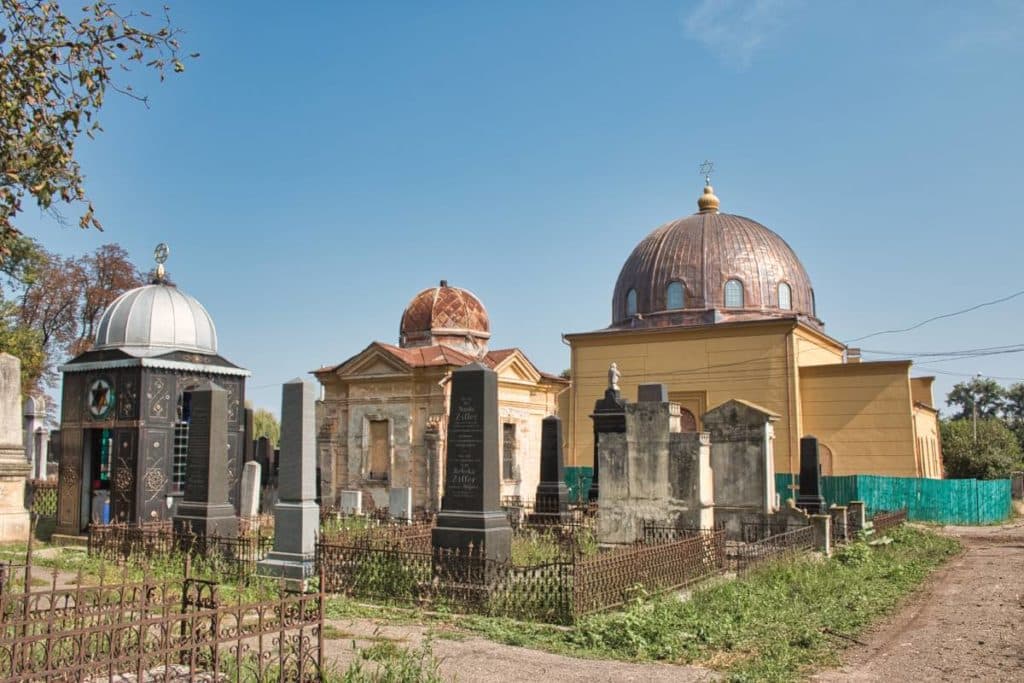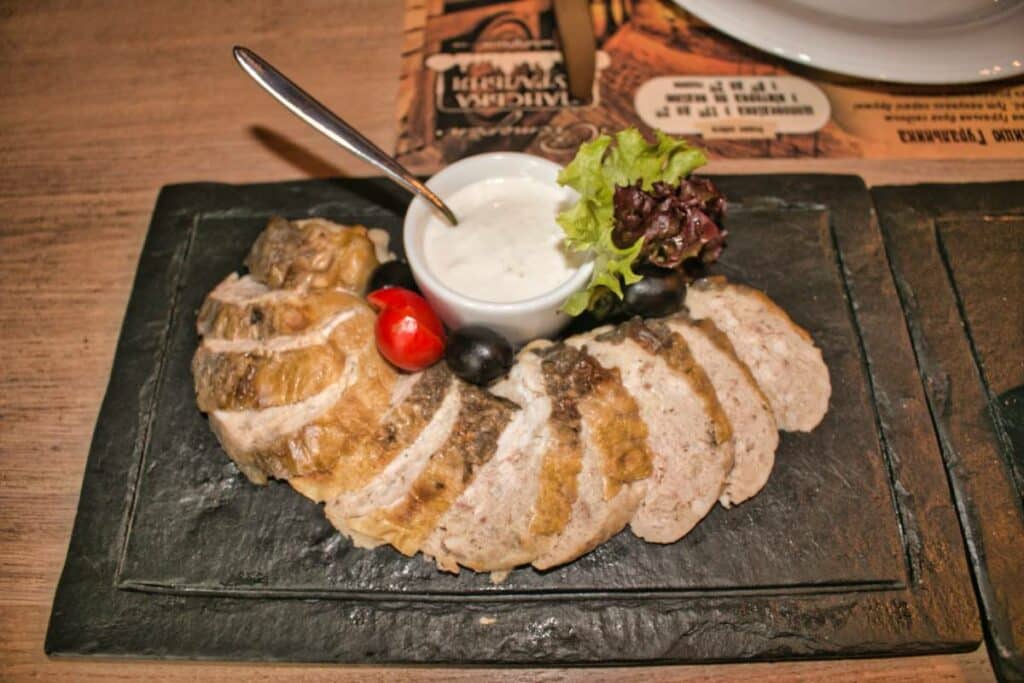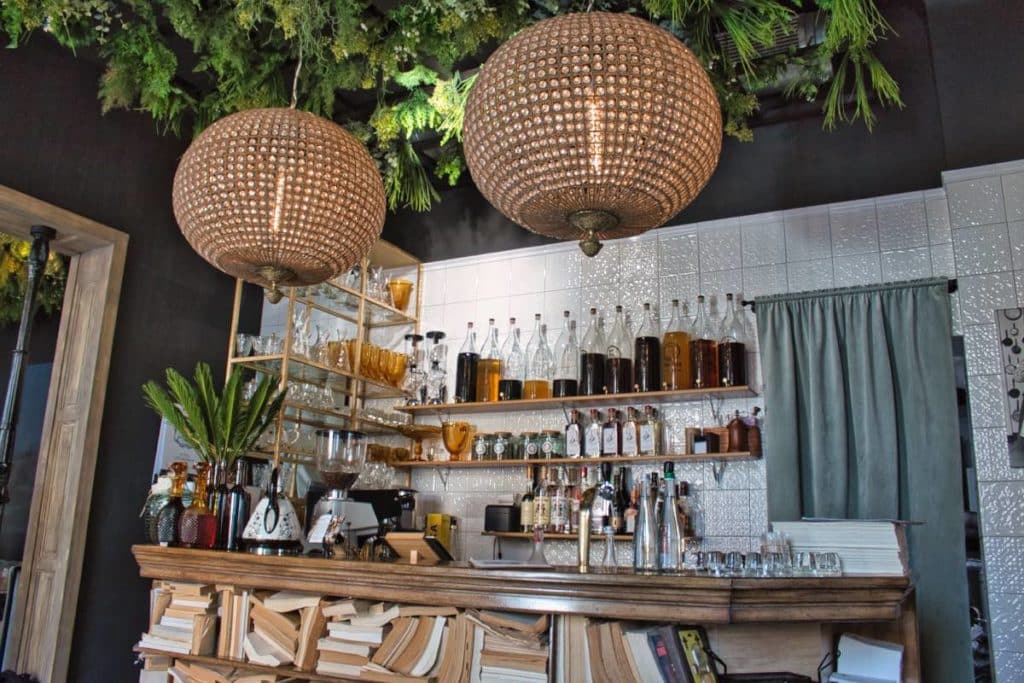Contemporaries described Chernivtsi as a “customs station at best” when it fell to Austria in 1774 in the course of the Habsburgs’ conquest of the Bukovina. But the affiliation with the multiethnic empire became a fortune for Chernivtsi. The Austrians breathed new life into the region. More and more Jews settled down in Chernivtsi. At the beginning of the 20th century, Jewish Chernivtsi alone was a medium-sized small town. That is why today we are going on a tour of this wonderful heritage.
Language in Jewish Chernivtsi
Many of the Chernivtsi Jews spoke German, so that from the middle of the 19th century German was the dominant language in the multicultural metropolis. As many as four German-language newspapers were published in Chernivtsi: the Czernowitzer Zeitung, the Czernowitzer Allgemeine Zeitung, the Czernowitzer Morgenblatt and the Czernowitzer Deutsche Tagespost.
Yiddish in Chernivtsi
To be fair, however, it should be mentioned that in the censuses Yiddish was also commonly counted as German. Yet Yiddish was an important language in the history of the city. Writers such as Elieser Steinbarg and Moshe Altman wrote their works in Yiddish. In 1908, the Conference for the Yiddish Language was held here to promote Yiddish. It was a sign that the language of Eastern European Jews had emancipated itself from the shtetls and wanted to be among the cultural languages of the world.
The famous Jewish writers from Chernivtsi
However, Jews wrote not only in Yiddish but also in German which gave a boost to German culture in Chernivtsi. The most famous Jewish writer among them was Paul Celan. He wrote the masterful poem Todesfuge (Death Fugue), which probably best put the horror of the Holocaust into verses. Rose Ausländer also came from and lived for a long time in Chernivtsi. She was able to survive the Holocaust in Chernivtsi. Selma-Meerbaum-Eisinger, a cousin of Paul Celan, on the other hand, died in a Nazi labor camp. Those who know the few works she left, know what she would have been capable of had she lived past the age of 18 and survived the shoah.

Chernivtsi Jewish Museum and Paul Celan Literary Center – Fighting so that they aren’t forgotten
So that the importance of the Jewish people for Chernivtsi is not completely forgotten, the Museum of Jewish History and Culture of Bukovina recalls the former glory days. The building of the museum used to be the Jewish House. Interestingly it stood exactly opposite the German House in complete harmony and as a symbol for the multi-ethnic metropolis that is Chernivtsi. It was here that the aforementioned World Yiddish Congress was held in 1908. The Paul Celan Literary Center also commemorates the cultural heritage of the Jews in Chernivtsi with regular events. You can visit the café in the building at any time.
Jewish Heritage in Chernivtsi – The Cinemagogue and the shadows of the past
Of the 120,000 Jews who lived in Bukovina before World War II, only 40,000 survived the war and the Shoah. Many, like Rose Ausländer, left the Soviet Union. The exodus continues to this day, drawing Jews from Ukraine to Israel, Germany or the United States. With the people much of the culture disappeared. Of the more than a hundred synagogues and prayer houses that existed at the turn of the century, there is exactly one today that serves this purpose. However, it was only rebuilt in 2001 – on the initiative of Jews from the USA and Israel.
Once the largest synagogue in the city, the Choral Temple (see cover image) survived the war as a ruin. In the Soviet Union, the walls were used to build a cinema. The appearance is only remotely reminiscent of the former Great Synagogue of Chernivtsi.



Chernivtsi Jewish Cemetery – the most beautiful Jewish burial ground in Ukraine
The Jewish cemetery is also in a rather modest condition. The burial ground, with probably 50,000 graves and thousands of gravestones, is overgrown for the most part. For a long time, there was no money to renovate the big funeral hall at the entrance to the cemetery. In the meantime, however, at least the facade has been renovated. And the main paths in the front half are now cleared of weeds more frequently by the city. Chernivtsi has realized that its Jewish heritage can be a magnet for tourists. And so on some days busloads of tourists push their way through the beautiful cemetery with its many matsevahs. Here lies, among others, the first Jewish mayor of the city – Eduard Reiss.
Sadhora – place of pilgrimage for Hasidic Jews
Sadhora today is a district of Chernivtsi, but was its own town until the second half of the 20th century. In 1842 Rabbi Israel Friedman settled here, establishing his own rabbinical court. Friedman was known for his luxurious lifestyle, which led to an intimate enmity with the Jews from Sanz (now Nowy Sacz in Poland) around Rabbi Chaim Halberstam. The latter lived a modest life and criticized Rabbi Friedman’s extravagance.
Nevertheless, thanks to Friedman, many Jews settled in Sadhora, so that the town was a shtetl with over 80 percent Jewish population. Almost all of the Jewish families were persecuted and murdered in the Shoah. After the Second World War, only five Jewish families still lived here. Of the buildings, only the New Klois and the building of the Zaddick have survived.

Jewish Food in Chernivtsi – Delicious but not always kosher
With the memory of the city’s Jewish past, Jewish dishes are also returning to the menus of Chernivtsi’s restaurants.
Panska Huralnya
For example, at “Panska Huralnya” you can order gefilte fish, probably the most typical dish of Eastern European Jews. The cold minced carp is served especially on Shabbat and Jewish holidays. Admittedly, dubious “Jewish” dishes can also be found in the restaurants. A tomato cream soup with chicken breast clearly violates the kashrut, the Jewish dietary laws. But besides these supposed and real influences, there is a real Jewish restaurant.
Kosher Organic
In the Kosher Organic restaurant (Sadoovskoho Street 11), on the other hand, everything is prepared in a strictly kosher and authentically Jewish manner. This is quite obvious, as it is located right next to the entrance to the Chernivtsi Synagogue. The food is also very tasty.

Rita Steinberg
My absolute favorite restaurant is Rita Steinberg. Here you can also find Jewish dishes, which the owners found in old recipes from Bukovina. The interior is very appealing and modern and the dishes look fantastic as well. The taste is unique. However, the dishes here are also not prepared kosher.
Chernivtsi book tips
Chernivtsi is a mythical city. Due to the many famous poets from here there are some interesting books.
- The memory of Jewish Chernivtsi almost completely disappeared with the Holocaust. The book “Ghosts of Home: The Afterlife of Czernowitz in Jewish Memory” is a try to restore some of this memory and bring it back to life.
- Gatscher-Riedl, Gregor (Author)
- Rose Ausländer was one of the most famous writers from Chernivtsi. As a Jew, she survived the Holocaust here and also met Paul Celan in the ghetto. Her poems still radiate an incomparable power today. Some of her poems she wrote in English.
- Serhii Plokhy describes the history of Ukraine throughout the history. It’s a great book to understand more about this rather unknown country and comprehend the issues it faces today.

